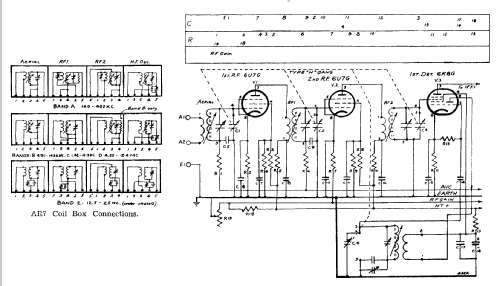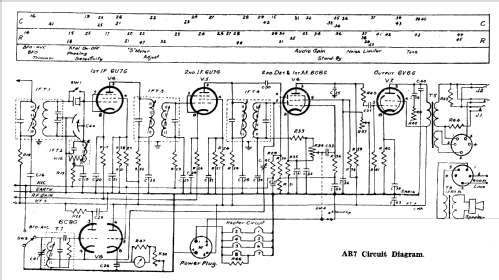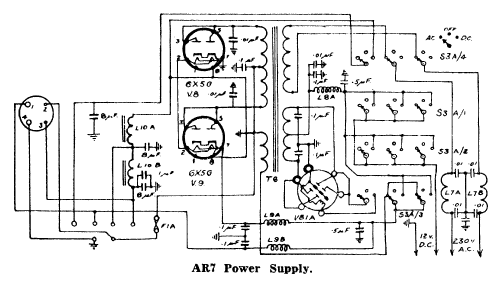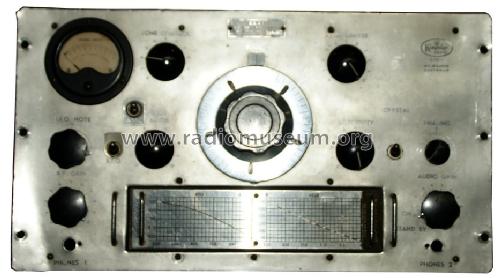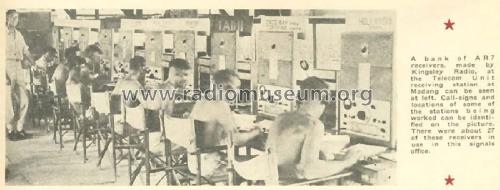K/CR/11 RAAF receiver type AR7
Kingsley (brand); various manufacturers
- Pays
- Australie
- Fabricant / Marque
- Kingsley (brand); various manufacturers
- Année
- 1942 ?
- Catégorie
- Récepteur commercial (peut inclure bandes amateurs)
- Radiomuseum.org ID
- 206758
Cliquez sur la vignette du schéma pour le demander en tant que document gratuit.
- No. de tubes
- 10
- Principe général
- Super hétérodyne avec étage HF; FI/IF 455 kHz; 2 Etage(s) BF
- Circuits accordés
- 11 Circuits MA (AM)
- Gammes d'ondes
- Bandes en notes
- Tension / type courant
- Secteur et accus rechargeables (eventuellement piles) / 240 / 12 Volt
- Haut-parleur
- HP dynamique à aimant permanent + bobine mobile
- Matière
- Boitier métallique
- De Radiomuseum.org
- Modèle: K/CR/11 [RAAF receiver type AR7] - Kingsley brand; various
- Forme
- Rack
- Remarques
- The Kingsley K/CR/11 is a communications type receiver similar in concept to the National HRO. The AR7 version came with 5 plug in coil boxes: A, 140-405 kHz; B, 500-1420 kHz; C, 1.42-4.3 MHz; D, 4.3-12.5 MHz; E, 12.5-25 MHz. The complete receiver consisted of 3 rack mounted units: the receiver proper, the power supply and the speaker. The two 6X5GT valves are in the power supply unit which uses a non-synchronous vibrator on 12 VDC. About 3200 AR7 versions were made and it is the most commonly found variant of the K/CR/11. Other versions made include one for the Australian Army and another for the Dutch Navy. After the war, the AR7 was keenly sought by amateur radio operators on the surplus market and, as a result, examples found today have usually been heavily modified.
- Poids net
- 54 kg / 118 lb 15.1 oz (118.943 lb)
- Schémathèque (1)
- HRSA "Radio Waves" magazine, Oct. '97 P3-8.
- Auteur
- Modèle crée par Stuart Irwin. Voir les propositions de modification pour les contributeurs supplémentaires.
- D'autres Modèles
-
Vous pourrez trouver sous ce lien 94 modèles d'appareils, 28 avec des images et 11 avec des schémas.
Tous les appareils de Kingsley (brand); various manufacturers
Musées
Le modèle peut être vu dans les musées suivants.
Littérature
Le modèle est documenté dans la littérature suivante.
